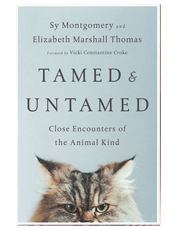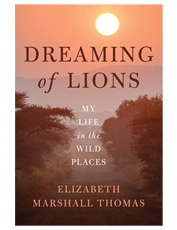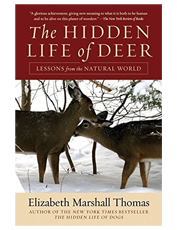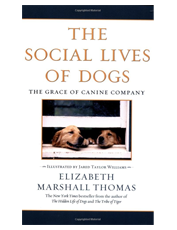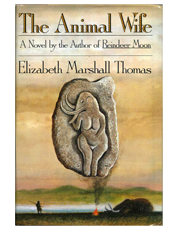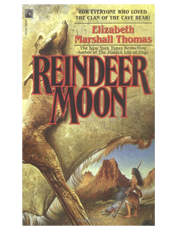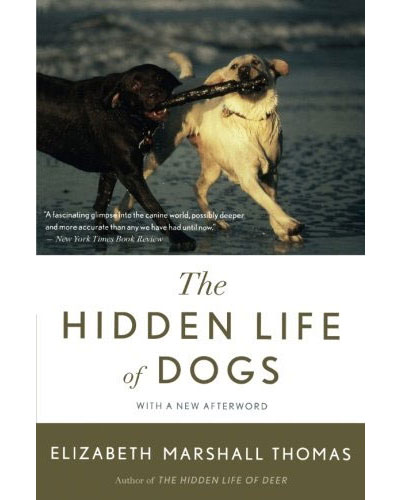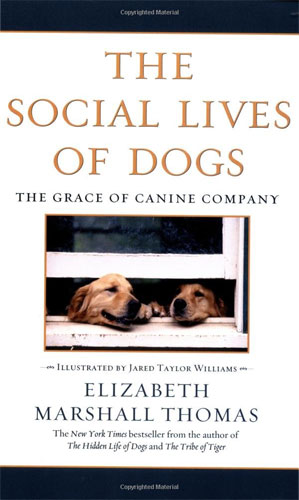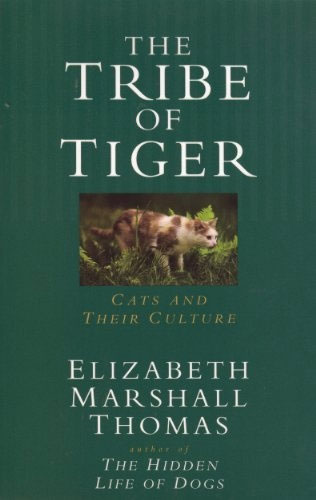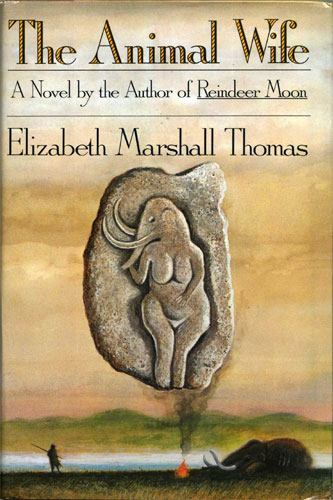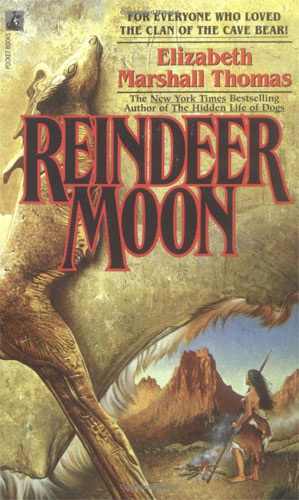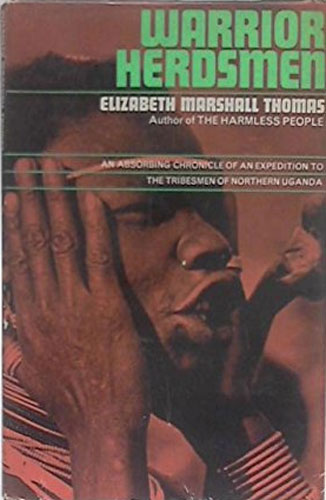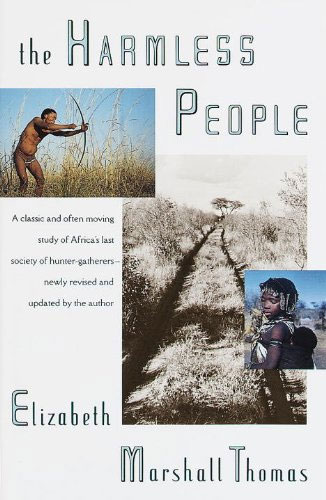The Hidden Life of Life
A Walk through the Reaches of Time
 ISBN: 978-0-271-08101-4
ISBN: 978-0-271-08101-4
Publisher: Penn State Press
Publication date: 03/15/2018
Pages: 216
Product dimensions: 5.5″ x 8.5″
“A skillfully written, well-informed, and accessible reverie on the nature of life on Earth, both fascinating and highly recommended.”
—Susan Waggoner, Foreword Reviews
“Life comes in countless variations, yet all are based on the same biological principles. Elizabeth Marshall Thomas loves them all—from lichens to fungi and from crocodiles to primates—and puts us on a time machine to go back to the turns evolution has taken, many of them surprising, and one of them leading to us.”
—Frans de Waal, author of Are We Smart Enough to Know How Smart Animals Are?
Chapter 1
About This Book
Anthropomorphism is deeply rooted in our culture. The word comes from Ancient Greek—anthrōp meaning “human” and morphos meaning “having form”—hence to anthropomorphize is to present a non-human as if it had human characteristics. During the Middle Ages, the people in Europe believed that animals so closely resembled humans that in 1475 a sow and her piglets were tried in court for murdering a child. The piglets were acquitted, but the sow was found guilty and executed. That poor pig was on her own, but in other such trials, some animals accused of crimes were provided with lawyers to defend them.
As the Middle Ages faded, modern science bloomed. Intangibles such as memory, thoughts, and consciousness can’t be measured, and by scientific standards, no hard evidence existed that other life-forms had those gifts. Lacking evidence, scientists took the position that they didn’t, and the word “anthropomorphism” became a term for unscientific twaddle or sentimental folly.
The surprising thing, at least to me, was the extremes to which this notion expanded. I once read a paper about a male leopard, written with strangely twisted sentences so the author could avoid calling him “he.” If you study a leopard’s accomplishments as this author did, you’d find it painful to call him “it” as if he was a “thing,” but calling him “he” was out of the question because “he” was used only for people. The poor author wanted to publish her paper in an accredited scientific journal, which was where I saw it, and thought it better to write unreadable prose than to disgrace herself with anthropomorphism.
But times are changing. Today, although we may never acknowledge this, we’re beginning to see that the people in the Middle Ages had it right. A contemporary scientist, the biologist and primatologist Frans de Waal, pushed back hard against viewing non-humans as “things” by naming the concept “anthropodenial”—viewing a life- form as if it did not have human characteristics. We won’t be calling our enlightenment “anthropomorphism” because we’ll probably call it “science,” and we won’t be putting pigs on trial or finding lawyers for them—we’ll just shoot them—but we’re beginning to acknowledge that we share an astonishing number of characteristics not only with other animals but also with fungi and plants. [expand title=”Show More”]
We’re a recent, tag-end species, brought here by steps taken by our ancestors and reaching back through time. We share characteristics with some of the earliest life, to say nothing of those who followed. It’s true that our form diverges from the others—all species diverge or they wouldn’t be distinct—so here we’re no exception; we clumped non-humans together and set ourselves apart because we didn’t seem to credit where we came from.
To know a crow from a raven or a spruce from a hemlock doesn’t mean we understand the qualities we share or how and why we came by these qualities. We also don’t appreciate the marvels achieved by other species, even the most familiar, such as houseflies or bumblebees, with complex abilities and evolutionary pathways that would confound us if we knew about them. We’re all doing the same thing, trying to live as best we can among the multitude of life-forms that covered our planet for much of its existence. We’re deeply interrelated, we share a common ancestor, we’re tied to one another, and here I try to trace the way this came about.
A reader who isn’t a scientist will surely be familiar with some of the information in this book and when coming upon a familiar fact will say, “Pshaw, I knew that already.” But many may find some material new and perhaps surprising, as this author was to learn after questioning her best-educated, most sophisticated, non-scientist friends. None of them knew what a “eukaryote” was, for instance, even though these friends are themselves eukaryotes and will be so for life. In fact, their eukaryote condition defies them. It’s by far our most important feature but is generally considered to be beyond a layman’s grasp.
This book is written by a eukaryote with no special training and is aimed at people like herself and her above mentioned friends. No doubt we were passing notes or otherwise diverting ourselves in high school science classes and now don’t burden ourselves with information we think we’ll never need. And even if we want such information, it is normally presented in scientific language and understood by relatively few.
I mean no disrespect for science. If not for science, a book such as this would consist of one blank page. But more people understand Yoruba and Ngakaramojong than understand science-speak. For instance, “The sporangia are typically globose to reinform, with dehiscence generally occurring along the distal edge.”* Did this tell you something new about a plant? If you try to learn about a dinosaur, you’re told that it’s an archosaur, and if you try to learn what that is, you’re told it’s a diapsid amniote. Whatever that means is private for scientists, and you are not included.
But this need not be so. Scientists study and explain the various life-forms, but they don’t own them. The life-forms of the past three billion years belong to all of us. In them we find our ancestors and the relatives of our ancestors. The smart ones gave rise to the scientists, but in the end, we’re all parts of one thing. So I aim for a layman’s vocabulary. For instance, while nothing can be done about the word “eukaryote,” which lacks a translation other than “us,” the name of the other two kinds of life-forms—the “prokaryotes”—can be translated as “microbes.” Today that word is often scorned, but everyone knows what it means.
Many scientific names are unpronounceable. I try to offer the pronunciations in parentheses, although sometimes a word or name has another pronunciation I may not know. I also add the meaning after the pronunciation when I can—eukaryote (you-CARRY-oat, “good kernel”), for instance. But this can’t always be done. Not all translations seem accurate, and not all names come from Latin or Greek. And many names have more than one translation.
I rarely call a life-form “it,” since I don’t share the fears of the scientist who wrote about the leopard. Here, if a life-form has gender, the pronoun is “he,” “she,” or “who,” never “it” or “which.” In the same spirit, I anthropomorphize without shame. Sometimes I call the natural world or the evolutionary process “Gaia.” Or I might say a plant “remembers” something or “communicates” something, because plants do remember and communicate in ways that are different from ours but with similar results and for the same reasons. Knowledge is different from instinct; want is different from need. So if I say a plant or an animal “knows” or “wants,” I mean it. Here I must confess that when avoiding anthropodenial, I may sometimes exceed what de Waal had in mind. At other times, too, I may express myself in ways most scientists will find vague or oversimplified. If this disturbs a reader, it should read a different book.
Our objections arise from our sense of importance. We’ve said we were made in the image of God. We see ourselves on the topmost rung of the evolutionary ladder. Of course we do. We invented the ladder. What else would we put on the top? Up on our ladder, we ignore the fact that every life-form, from a spider to a giant sequoia, is at the top of its own ladder with abilities we can barely imagine. We can’t survive a massive dose of radiation or live a lifetime under water. We can’t inhabit a glacier or another living organism. We can’t spin a web or make the silk to do it (although we’ve tried) even though it’s acknowledged as the world’s strongest natural fiber. We can’t see in the dark, we can’t hibernate, we can’t kill a giraffe with our mouth or hold our breath for half an hour, and we don’t know how to split ourselves in half. We can’t even metabolize a biochemical with sunlight, although both are readily available. And once you learn that this implies using parts of the sunlight to take atoms from molecules, you wonder why, when naming ourselves, we followed Homo with sapiens, which in English means “wise.”
Lynn Margulis, the late, world-famous scientist, addressed our self-regard as follows: “There are no ‘higher beings,’ no ‘lower animals,’ no angels, and no gods. Even the ‘higher primates’ are not higher. We and our primate relatives are not special, just recent. We are newcomers on the evolutionary stage.”
A discussion of the evolutionary stage involves theory, which has several meanings ranging from “just a guess” to “set in cement,” so certain theories mentioned here may be modified while others may stand fast. Evolution, for instance, is a modified theory, once held to be a flash event that took place in about a week, now theorized as a multi-billion-year process that brought us here and is ongoing. Those who call this “the theory of evolution” mean one thing, and those who say “it’s just a theory” mean something else.
Theories are modified or cancelled, new ones arrive, and those mentioned in this book may vary in probability. Wherever I can, I try to signal this. Science is as important to the world as water, and everything resulting from its liquid discipline has a “maybe” tucked in somewhere. That’s the great thing about science. If not for the “maybe,” science would freeze.
Then there’s perception of time. To grasp the essence of the evolutionary stage, we must imagine the years of its existence in millions and billions, which isn’t easy. I noticed the problem while trying to imagine the edge of the universe, said to be 13.8 billion light-years away. As a child, I was told that heaven was beyond the universe, and that about two thousand years ago, Jesus left the earth to go there. At the time, I thought he must be looking down at us from heaven, but now it would seem that he’s still on his way. Even if he’s going at the speed of light, or 186,000 miles per second, at the time of this writing he’s only gone as far as the Snow Angel Nebula so he’s still in the Milky Way. That’s nowhere near the edge of the universe. His journey has just started.
The image isn’t meant to fit with religion—heaven could be somewhere else—and it certainly doesn’t fit with science because the universe is expanding, and who knows what that would mean to a space-traveler trying to reach the edge? It simply suggests how dim our perceptions can be when involved with long distance and time.
My own perceptions of space and time were improved by my wonderful cousin, Tom Bryant, an astronomer who specializes in double stars. He’s a teacher at heart, so when he visits, he brings a big telescope to familiarize us as best he can with what’s in the night sky.
He set up the telescope in our driveway and with it showed us Jupiter with its string of moons and strips of storms. Then he showed us the moon with its craters and mountains as yet undamaged by our species. He showed us the Andromeda galaxy, which appeared as a tiny fuzzball in the eastern sky but is really a collection of a trillion stars—yes, a trillion stars—with a black hole among them, and in the northern sky he showed us Camelopardalis, a constellation that circles the pole. In it was a tiny, pinpoint dot that was a quasar, four billion light-years away. It looked like a star but was really an enormous, mysterious ball of energy, perhaps with a black hole inside it.
Tom showed us another quasar in the constellation Draco that was 8.5 billion light-years away. But the one in Camelopardalis seemed more compelling, because the light that came in our eyes that night was starting toward us when life began on earth.
That’s a long time. My skin prickled. Tom showed us a galaxy in Virgo. The light we saw from that galaxy left sixty-six million years ago, he said, which means it left at the time of the Cretaceous-Tertiary or K-T extinction.
Again, my skin prickled. That extinction ended the reign of the dinosaurs, one of whom was a certain Tyrannosaurus rex, whose fossil I saw in a museum, an assemblage of giant bones arranged in pre-attack position and topped by a horrifying skull with big, dagger-like teeth. The speck of light we saw with the telescope could have left its galaxy when this T. rex was alive. Her fossil was found in Canada, not too far from where I live now, and maybe she saw the space rock, nine miles wide, as it sped toward the Gulf of Mexico, where it crashed and caused the extinction.
But even if she just saw the night sky, that galaxy was in it, and the light it was sending when she saw it was arriving in Tom’s telescope as we watched. It traveled for sixty-six million years before it reached us that night, but somehow it did connect us. What keeps us apart is time.
This has nothing to do with astrology, as a famous astronomer pointed out when asked what his sign was. If I were asked what my sign was, I’d say “I’m a Virgo.” He said “I’m a Feces.” That’s science- speak for “shit” and it sounds like Pisces, a constellation favored by astrologists.
I think he meant that stars don’t make us, and I’m sure he’s right. When the extinction occurred, we were rat-sized animals who lived in the trees, and if starlight determined who we are, we’d be rat-sized today because that starlight is just now arriving. Stars don’t make us. But they do connect us, commemorating all who ever lived on earth, and starlight lets us feel this.
Don’t bother wishing on them though. You say “Starlight, star bright, first star I see tonight, I wish I may, I wish I might, have each wish I wish tonight,” and then you make your wish, which can’t possibly come true because the first “star” you see on any night is a planet. It looks around to see what star you’re talking to, sees none, gives a shrug, and lets your wish fly past. Your little wish could travel for thousands of years before it meets a real star and by then it’s too late. Better to wish on the sun. [/expand]


